This blog post is all about non-alcoholic wines for Dry January and beyond.
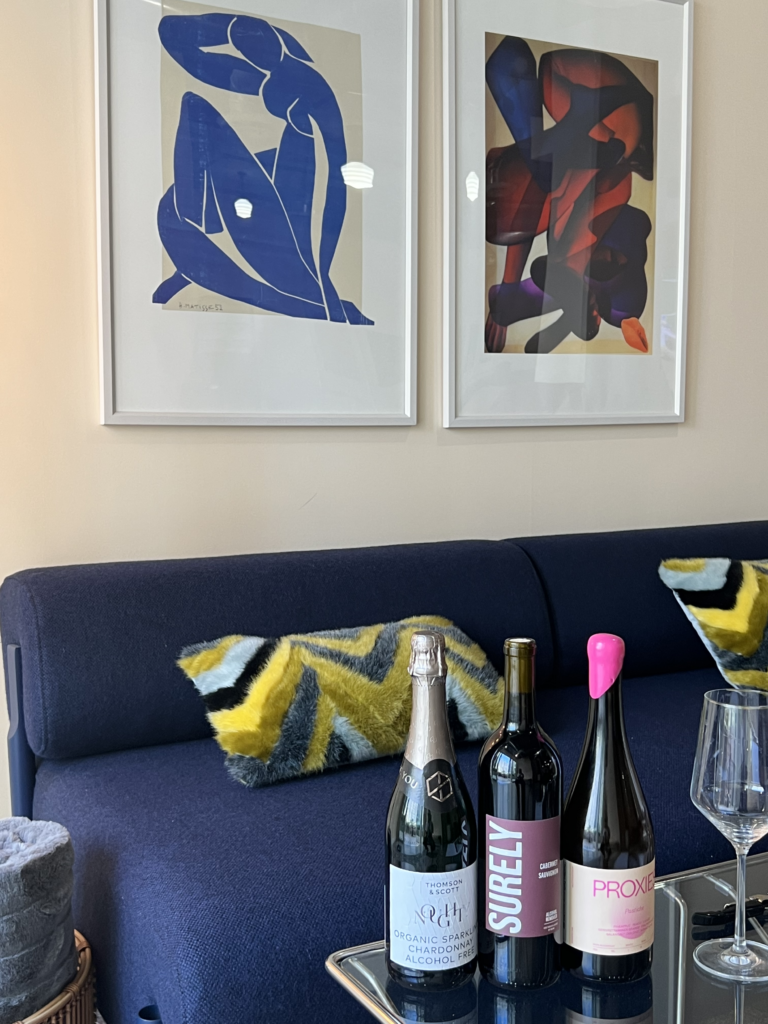
Every January wine lovers fall into two camps: the ones that do “Dry January” and the ones that don’t. “Dry January” began in 2012 as an initiative by Alcohol Change UK, a British charity, to “ditch the hangover, reduce the waistline, and save some serious money by giving up alcohol for 31 days.”
To be honest, I never take part in dry January, mostly because I try to be mindful about my wine consumption all year round, never overindulging or choosing to fully abstain. With that said, I support my wine friends who take part in the initiative and the ones who don’t.
This year, I’ve decided to taste-test some non-alcoholic wines for dry January and see if they are a great wine alternative.
[ez-toc]Soft Spirits, Los Angeles
I stopped by Soft Spirits, L.A.’s first non-alcoholic bottle shop in Silverlake. They have a large selection of not only non-alcoholic wines but beers and spirits as well. (The shop is aesthetically curated and totally worth just stopping in!)
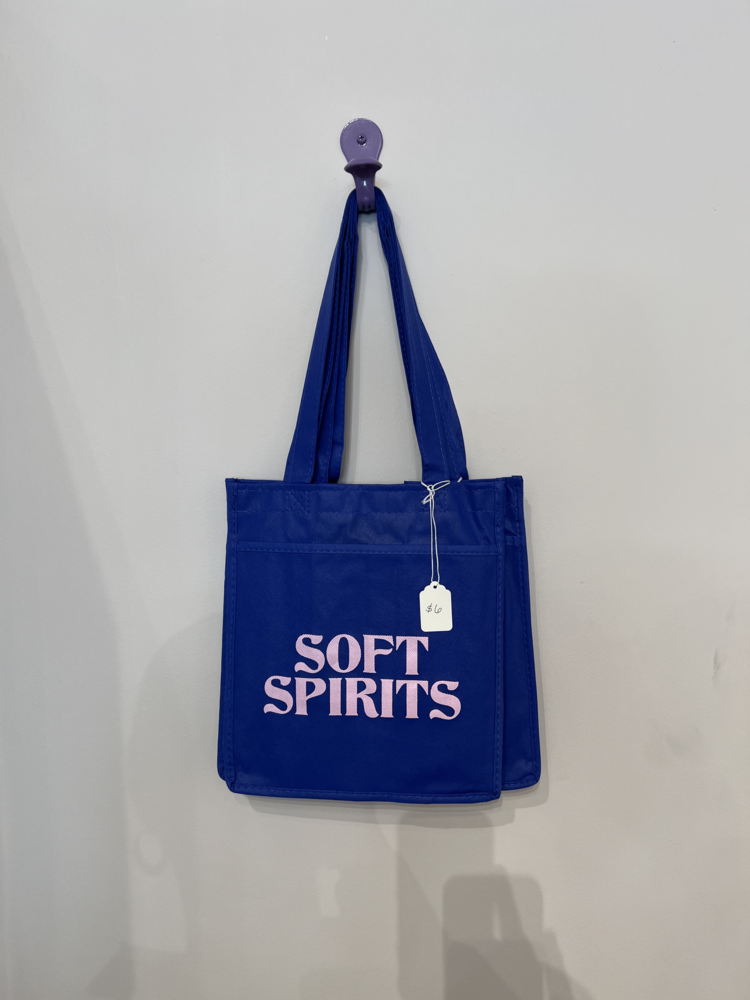
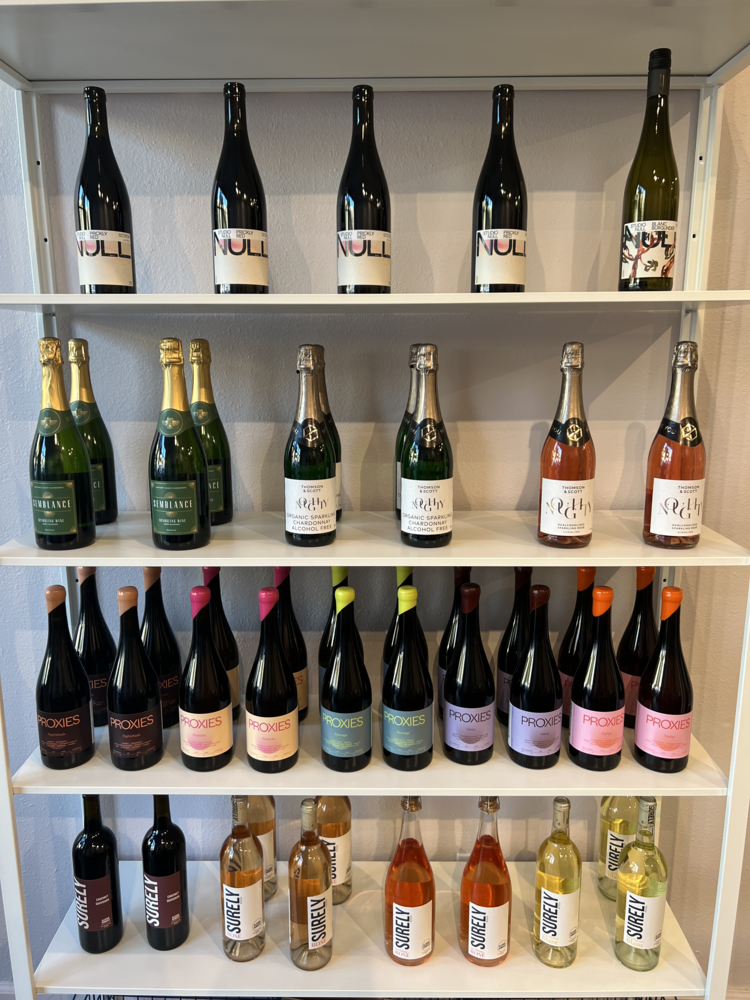
How is non-alcoholic wine made?
Before we get into the three wines non-alcoholic wines for Dry January that I purchased, let’s take a look at how non-alcoholic wines are made.
Several products on the market are bottled similarly to wine and advertised as non-alcoholic but are juices, sparkling teas, etc. No shade to those options, but that’s not what we’re talking about here. (I did add a non-alcoholic beverage to the lineup!)
True non-alcoholic wine actually starts off just as a regular wine would. Varietal grapes are picked and go through the fermentation process to create alcohol and the lovely aroma, flavors, and texture that we love in wine. Once the fermentation is complete, winemakers can make post-fermentation decisions like aging in oak.
Here comes the fun part, (or not-so-fun part depending on who you’re talking to): removing the alcohol. There are two options for this step, both are quite technical: distillation or filtration.
The most popular way to remove alcohol is through vacuum distillation, a process that very carefully heats the wine and allows the main alcohol in the wine, ethanol, to evaporate. The result is a true-to-taste “wine” with less than 0.5 percent ABV.
The second way a wine can be dealcoholized is through reverse osmosis, a form of cross-flow filtration that removes alcohol and water, which can be distilled to remove the alcohol. The water is then blended back to recreate the wine.
Both processes require a winery to have specialized equipment that can be rented or bought but add an additional cost.
So are non-alcoholic wines the same as alcohol-free or dealcoholized? The short answer is yes and the terms are often used interchangeably to refer to a beverage with little to no alcohol – 0.0% ABV. (Note: These terms can vary depending on specific wine laws in different countries.)
Non-Alcoholic Wine Taste Test
Looking for non-alcoholic wines for Dry January? I stopped at Soft Spirits in the Silverlake neighborhood of Los Angeles.
Here are the non-alcoholic wines I picked up:
Noughty, Sparkling Chardonnay, $24
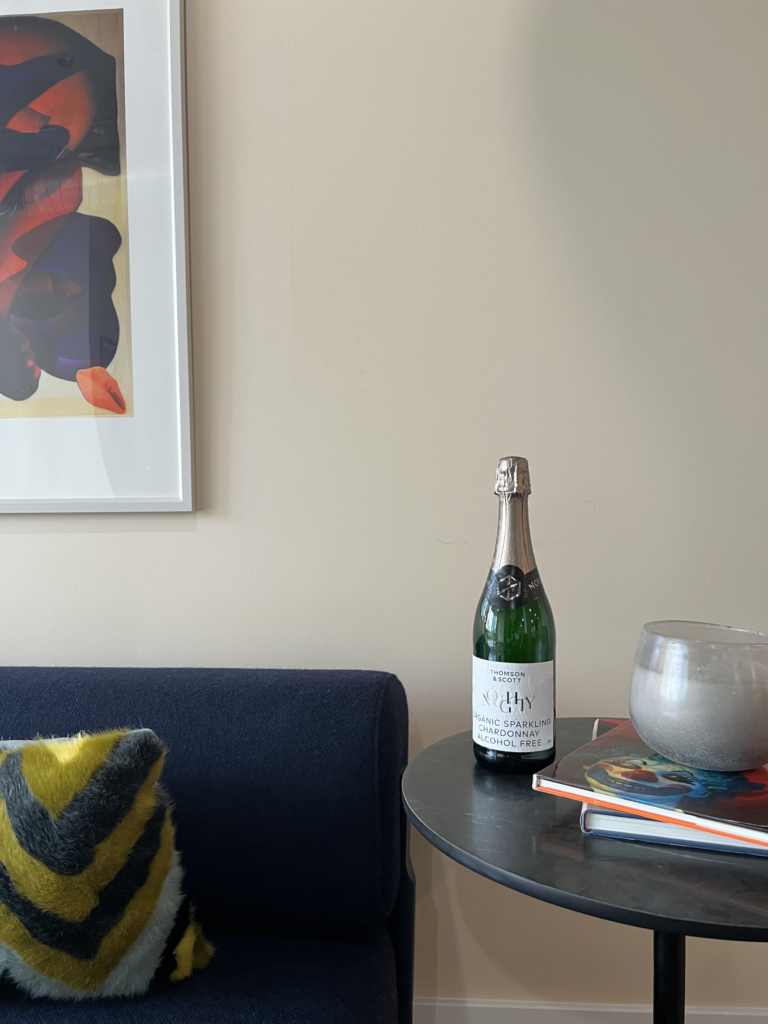
Noughty was started in the UK with the goal of greater transparency in wine production and labeling. The 100% Sparkling Chardonnay was sourced from Southern Spain and is certified organic, vegan, and halal.
Since the brand was founded on the principle of transparency, I would have loved to see a more detailed tech sheet about how the wine is produced.
Tasting Notes:
This non-alcoholic wine is frothy when you first pour it into the glass. On the nose, it smells like apples and citrus and resembles the aromas of wine. Much of the same on the palate with the mouthfeel of a medium-bodied wine. Unfortunately, the fizz dissipates quickly, and then it feels like drinking apple juice or cider.
The Noughty packaging is beautiful and would make a thoughtful gift for a pregnant friend or to have on hand for friends that don’t drink. (I love my friends and as the wine friend of the group, I wouldn’t serve them just anything.) Noughty also makes an alcohol-free Sparkling Rosé.
Surely, Cabernet Sauvignon, $30
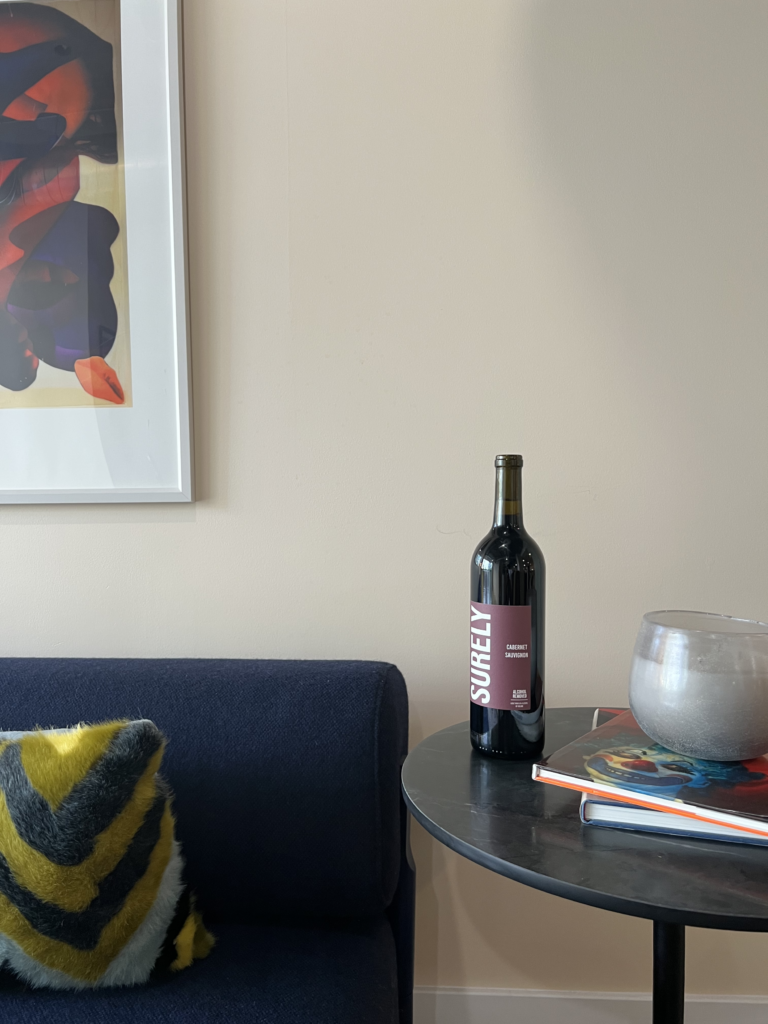
Surely is the non-alcoholic brand that I have seen advertised most. The brand works with winemakers in California to produce their alcohol-removed wines. The 100% Cabernet Sauvignon is sourced from Sonoma, California.
I love the transparency on the website. The FAQ page leads me to believe the wine is made through the filtration process described above.
Tasting Notes:
The first thing I noticed is the color is super inky purple, almost artificial-looking. On the nose, I smelled jammy fruit flavors and notes of chocolate. The palate was quite tart and the flavor fell flat for me. If you’re a big bold cabernet lover, the tannin structure wine will surely miss the mark. (You see what I did there).
This article attributes the lack of texture and flavor in non-alcoholic red wines (not just this particular brand) to the dealcoholization process. For the price, I would not get this wine alternative again. Surely also makes a Sauvignon Blanc, sparkling, and spritzes, all nonalcoholic. I’d be curious to try the other varietal options but honestly wouldn’t want to dish out the money for it.
Acid League Proxies, Pistache, $29
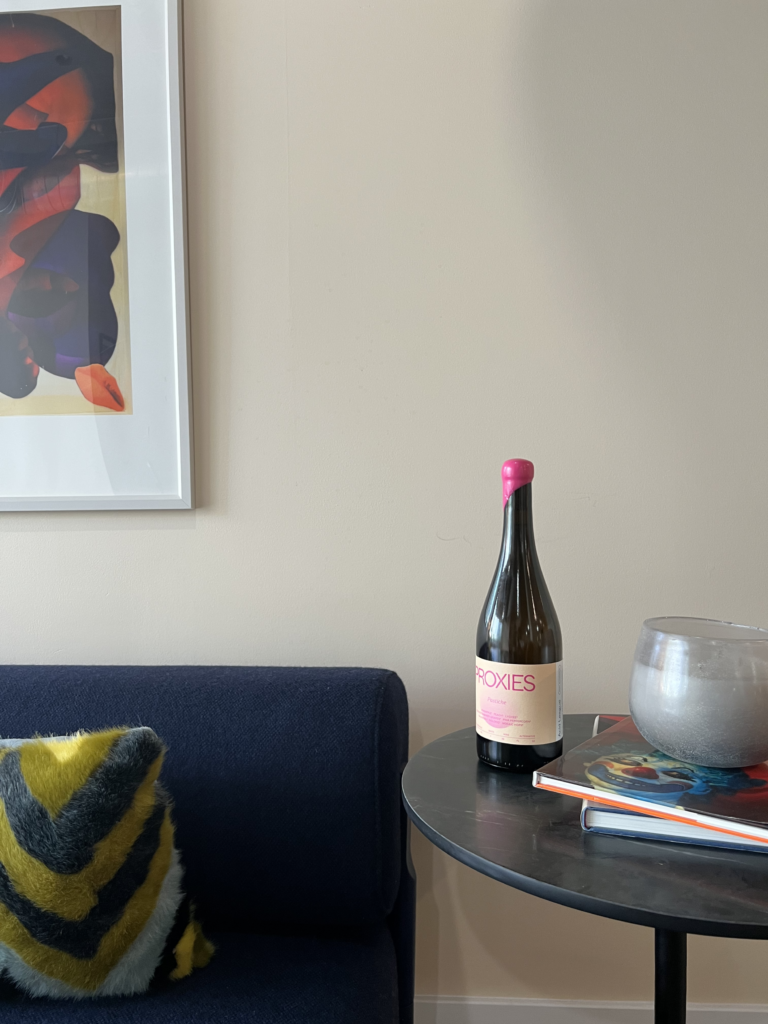
Remember we talked about non-alcoholic beverages that weren’t necessarily non-alcoholic wines? Acid League Proxies fit in that category.
Proxies are blends of juices, teas, spices, and bitters. Proxies aren’t posing as wine; the bottle clearly says “not wine”, and the site says the non-alcoholic beverages, “don’t necessarily taste exactly like any specific wine, but they’re made to look, feel, and drink like wine.”
What’s cool about proxies, and the main reason that I added this option to the lineup is that it is made with the juice of Gewurztraminer grapes, and other flavored juices to resemble the hallmark flavors in wine from Alsace, France!
Tasting Notes:
My initial thought when I smelled this wine was kombucha, which I love. It smells like flowers, pineapple, citrus, and anise. On the palate, it doesn’t have the fermented fizz that you would expect from kombucha (the beverage is not fermented), but it is full of flavor and a touch of sweetness!
I probably wouldn’t grab this as a wine alternative, but I wouldn’t mind drinking this by the pool with friends. Proxies come in several different flavors, each made with the juice of a different wine varietal.
My final thoughts on non-alcoholic wine
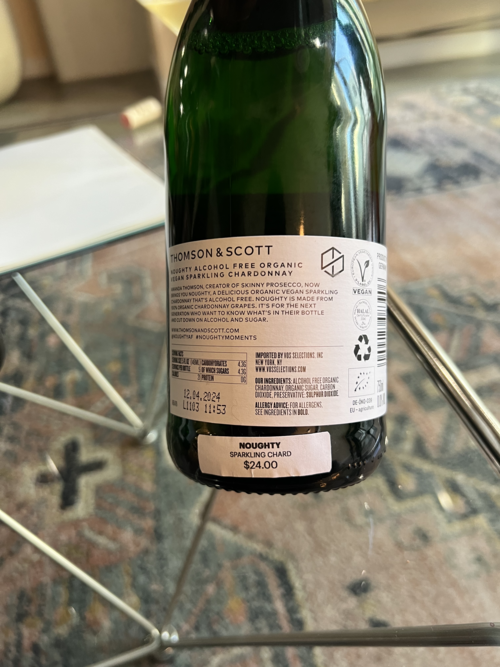
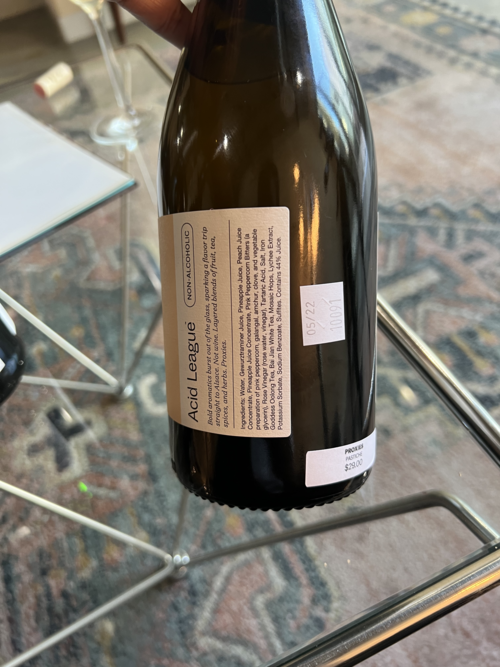
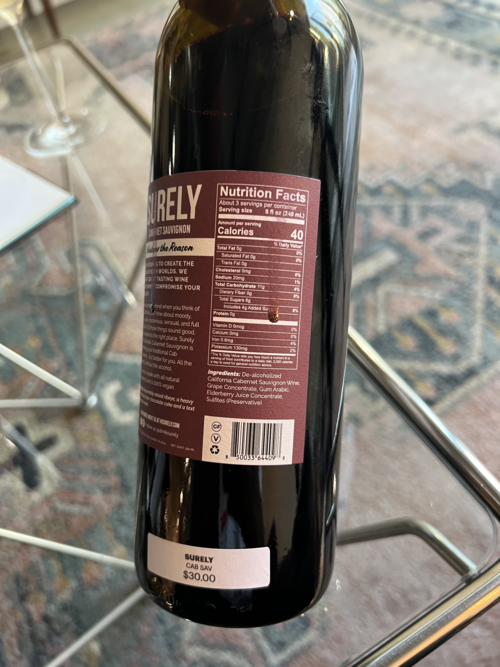
I love that all three options, while non-alcoholic, give you the experience of popping a cork and enjoying the “wine” experience. Another positive aspect of these non-alcoholic wines is the transparency about ingredients and nutrition facts. The alcohol beverage industry could benefit greatly by giving consumers more insight into what’s in their wine.
I am not completely sold on the idea of non-alcoholic wines for Dry January, but I do realize I have only tried a few. There are several other non-alcoholic wine brands on the market and well-known wineries like Giesen are adding non-alcoholic wine options to their portfolio.
In my wine journey, I live by the rule of never writing off a varietal, style, or region after one or even a few poor experiences. I will apply that rule here!
As the non-alcoholic market continues to expand, I remain open to trying some other options. For now, I won’t be making room on my wine rack to stock up on non-alcoholic wine options.
Have you tried non-alcoholic wines? What are your thoughts?
